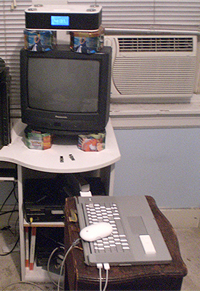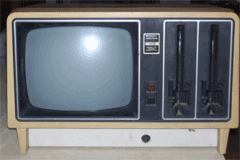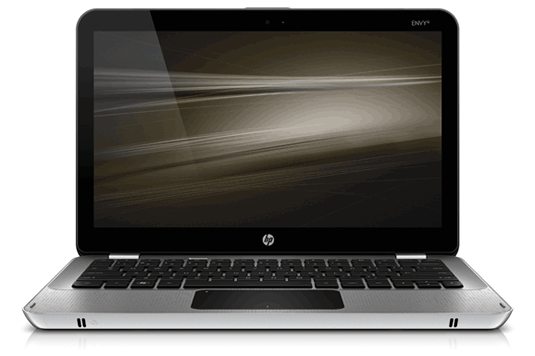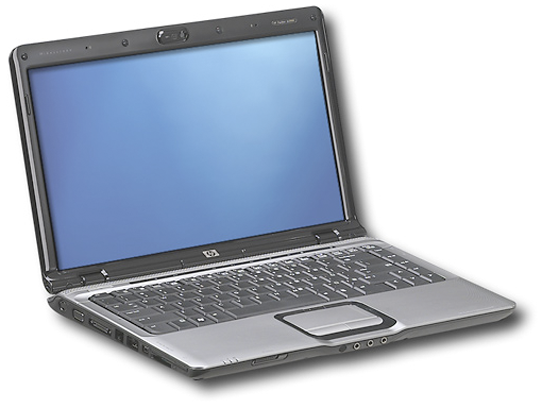 Yesterday, I wrote about the fact that Microsoft is now stripping crudware off Windows 7 PCs and selling them with its own lower-impact software suite. Here’s evidence of why that makes sense: British computer magazine PC Pro has published “The Crapware Con,” an ambitious report on the third-party software that PC manufacturers pile on top of Windows. Thanks to such apps, the slowest PCs took more than twice as long to boot up as the fastest ones, and PC Pro is skeptical of the quality of much of the software that PC makers add. (Me too: I’ve lost track of how many Windows machines I’ve used with proprietary Wi-Fi utilities that don’t seem to do anything except make it harder to connect to a network.)
Yesterday, I wrote about the fact that Microsoft is now stripping crudware off Windows 7 PCs and selling them with its own lower-impact software suite. Here’s evidence of why that makes sense: British computer magazine PC Pro has published “The Crapware Con,” an ambitious report on the third-party software that PC manufacturers pile on top of Windows. Thanks to such apps, the slowest PCs took more than twice as long to boot up as the fastest ones, and PC Pro is skeptical of the quality of much of the software that PC makers add. (Me too: I’ve lost track of how many Windows machines I’ve used with proprietary Wi-Fi utilities that don’t seem to do anything except make it harder to connect to a network.)
Tag Archives | PCs
Microsoft Sells Crud-Free PCs
 Whenever anybody asks me for my take on Windows 7, I share my largely positive reaction, but am careful to insert a note of necessary gloom: If PC manufacturers lard up Windows 7 machines with adware, demoware, and various other forms of unwantedware, they’re going to ruin a good thing.
Whenever anybody asks me for my take on Windows 7, I share my largely positive reaction, but am careful to insert a note of necessary gloom: If PC manufacturers lard up Windows 7 machines with adware, demoware, and various other forms of unwantedware, they’re going to ruin a good thing.
Turns out Microsoft apparently has the same concern. Over at TechFlash, Todd Bishop is reporting that the company is not only selling PCs at its retail stores and online but has customized them to be free of junkware (and to include a bunch of Microsoft apps and services, including the ones it removed from Windows 7.) Here, for instance, is an HP Pavilion that sells for the same price it does at HP’s own site (OK, for a penny more).
I’m not sure whether Microsoft hopes to sell vast quantities of PCs, but even if these “Signature” systems are nothing more than an experiment, I like the idea–and I’d like to think that they’ll shame the worst offenders among PC manufacturers into shipping machines that treat Windows 7 (and more important, customers) with a certain degree of dignity that’s often lacking in the PC world. (The lack of cruft on Macs is one of several reasons why all Macs make a better first impression than most Windows systems.)
Side note: I just bought an Asus thin-and-light notebook that’s running Windows 7. It’s certainly not crippled by crud, but I can’t understand why Asus dumps an icon for a little self-running sales demo of the PC on the desktop. Isn’t that a little like a realtor telling you it’s your responsibility to remove the FOR SALE sign from the house you just bought?
4 comments
Classic PCs vs. New PCs: Their True Cost
 You’re familiar with Moore’s law. You know all about the accelerating pace of information technology. Regardless, you’re still amazed at how many gigabytes you can fit in your pocket these days. Remember how your first computer’s entire hard disk only held 20 megabytes? You could accidentally swallow a thousand times as much data now if you weren’t careful.
You’re familiar with Moore’s law. You know all about the accelerating pace of information technology. Regardless, you’re still amazed at how many gigabytes you can fit in your pocket these days. Remember how your first computer’s entire hard disk only held 20 megabytes? You could accidentally swallow a thousand times as much data now if you weren’t careful.
But how much did that old hard drive cost? I mean really cost? Our memories get fuzzy on this point, because the buying power of the U.S. dollar has not remained constant over the years. Inflation has decreased the value of the dollar, per dollar, continuously for over a century. That means if you bought an IBM PC for $3,000 in 1981, you were actually spending the equivalent of $7,127.69 in today’s dollars.
Wait..what? $7,000 for a PC? Does anybody buy a $7,000 PC these days? Does anybody even sell a $7,000 desktop PC now? In our present climate of plentiful sub-$1,000 computers, surely a $7,000 PC must be the most incredible machine ever invented. But for a business-oriented machine in 1981, that sounded cheap.
To examine this trend, let’s take six classic personal computers from yesteryear–some cheap, some expensive–and see what you could buy today for the same price. And we’re not talking original retail price here; we’re going to take inflation into account. For example, the Commodore 64–once considered a low-cost home computer–originally sold for $1,331.62 in 2009 dollars. Today you can get quite a bit for that much money. How much? That’s what we’re going to find out.
49 comments
The Worst PC in America: Found!
 Reynaldo Rivera’s 2007-era MacBook Pro has lost its screen, not to mention a few of its keys. Its trackpad and optical drive don’t work. Its mouse is held together with tape, and he uses a battered copy of Dante’s Inferno as a mousepad. It outputs video to a 13-inch standard-def CRT TV–and must do so by routing it first through an old VCR. Oh yeah, I forgot: It recently stopped running, period.
Reynaldo Rivera’s 2007-era MacBook Pro has lost its screen, not to mention a few of its keys. Its trackpad and optical drive don’t work. Its mouse is held together with tape, and he uses a battered copy of Dante’s Inferno as a mousepad. It outputs video to a 13-inch standard-def CRT TV–and must do so by routing it first through an old VCR. Oh yeah, I forgot: It recently stopped running, period.
This, my friends, is no ordinary bad PC–and that’s why it’s the winner of Technologizer’s Worst PC in America contest. Reynaldo gets the nifty HP Envy 13 laptop, courtesy of HP. Thanks to them, thanks to Reynaldo–and thanks to everyone who entered. You guys own some terrible computers!
To wrap things up, I’ve published some visual highlights of selected contenders as a slideshow, and you can also check out all the entries.
14 comments
The Worst PCs in America

Some PCs are born crummy. Some achieve crumminess. And some have crumminess thrust upon them. Those are my conclusions after judging our Worst PC in America contest, in which we asked you to tell us about really rotten personal computers–with the lure of a snazzy HP Envy 13 laptop to be awarded to the most outstandingly awful entry. Herewith, some highlights lowlights, including both once-decent machines that have fallen upon hard times and some systems that were kind of terrible and/or just plain odd from the get go.
Thanks to everyone who entered!
14 comments
Our Quest for the Worst PC in America Ends Today
 Over the past couple of weeks, members of the Technology community have been gracing this site with words, pictures, and videos about some truly terrible personal computers. But it’ll all end tonight at 5pm PDT, when we stop accepting entries in our Worst PC in America contest.
Over the past couple of weeks, members of the Technology community have been gracing this site with words, pictures, and videos about some truly terrible personal computers. But it’ll all end tonight at 5pm PDT, when we stop accepting entries in our Worst PC in America contest.
We’ll then pick an, um, winner based on both the badness of the PC and the creativity of the entry–and its owner will receive HP’s slick new Envy 13 notebook, courtesy of HP.

If you’ve been too shy to share your clunker with us, now’s the perfect time to fess up. Go here to read the rules. To enter, reply to this forum thread–which contains all the entries so far–and tell us about your machine.
3 comments
Tell Us About Your Bad PC, Win a New Laptop
 Our search for the single most embarrassingly lousy computer in our great nation continues! We’ve received some great nominees so far, which you can check out here. But I’m hoping that more of you will fess up to owning truly crummy machines, especially since we’ll pick one person who enters the contest to win a slick new HP Envy 13 laptop, courtesy of HP.
Our search for the single most embarrassingly lousy computer in our great nation continues! We’ve received some great nominees so far, which you can check out here. But I’m hoping that more of you will fess up to owning truly crummy machines, especially since we’ll pick one person who enters the contest to win a slick new HP Envy 13 laptop, courtesy of HP.
The contest continues until this Friday, October 16th at 5pm PDT. Here are the official rules and details on entering. Tell your friends–especially the ones who still have terrible old computers lurking in their closets…
3 comments
Recession Slams PC Industry, Shipments Shrink
 PC shipments are set to decline for the first time since 2001, iSuppli said Tuesday. The call reverses an earlier one which had said the industry would be able to eke out a small gain for the year. In any case, it appears that the severe recession is at fault for the pullback.
PC shipments are set to decline for the first time since 2001, iSuppli said Tuesday. The call reverses an earlier one which had said the industry would be able to eke out a small gain for the year. In any case, it appears that the severe recession is at fault for the pullback.
A four percent decline is expected in PC shipments worldwide year over year to 287.4 million units. However, the drop would only be temporary as shipments are expected to grow 4.7 percent in 2010.
Desktops appear to be the industry’s weakest spot. Year over year, shipments plummeted 23 percent in the first quarter. iSuppli expects a similar number for the second quarter when figures are compiled in the next few weeks.
Notebooks are helping to buoy shipments. Shipments there will climb nearly 12 percent to 155.9 million units this year. That would be enough to give portables a majority market share for the first time.
This isn’t all that surprising considering notebooks have been growing in popularity rather quickly for several years now. It seems that consumers are increasingly choosing mobility over power — as a general rule, desktops are more powerful PCs (for cheaper) than the notebook.
Either way, iSuppli’s findings shouldn’t surprise any of us. In a economy like this, we’re more worried about the necessities in life. While many of us are addicted to the Internet these days, a shiny new computer is not that necessary to surf the web with.
One comment
The Race for Unplanned Obsolescence
[NOTE: Here’s a post that first appeared in our free T-Week newsletter, which you can subscribe to here.]
 I’ve been thinking a lot about PC components lately–the obligatory, the optional, and even the controversial. That’s because I’ve been doing a series of comparisons of Windows PCs and Macs, and most of my comparing involves running down a lengthy list of components to see who offers what, and at what price. Much of the avalanche of feedback I’ve been getting involves varying opinions on just how essential particular components are–such as whether Macs’ lack of memory-card slots is a catastrophe, or whether the fact that Macs do have FireWire ports is a major point in their favor.
I’ve been thinking a lot about PC components lately–the obligatory, the optional, and even the controversial. That’s because I’ve been doing a series of comparisons of Windows PCs and Macs, and most of my comparing involves running down a lengthy list of components to see who offers what, and at what price. Much of the avalanche of feedback I’ve been getting involves varying opinions on just how essential particular components are–such as whether Macs’ lack of memory-card slots is a catastrophe, or whether the fact that Macs do have FireWire ports is a major point in their favor.
“Essential component” is, by its very nature, a moving target of a concept. There was a time when I wouldn’t buy a computer without a serial port, a parallel port, and a floppy drive; today, I have no need for any of them, and neither do you. I recently bought my first laptop in many years that lacks an optical drive (an Asus EeePC 1000HE), and while it didn’t seem like a big deal at the time, I quickly plunked down some money for an external DVD writer. I still wish I could buy a notebook with a trackball, even though it’s one component that the industry declared obsolete about fifteen years ago.
So how about the major components that make up a circa-2009 personal computer? After the jump, my completely unscientific musings on their future, or lack thereof.
26 comments
The Commodore 64 vs. the iPhone 3G S: The Ultimate Showdown

